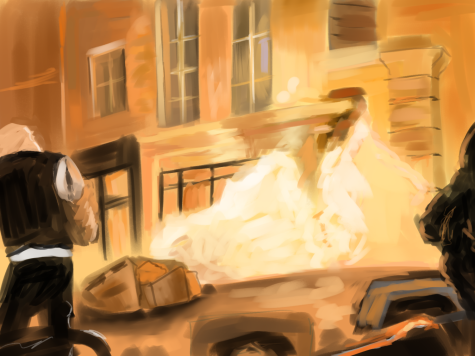The Conflict of Nagorno-Karabakh: Deadly War or Just a Mere Flareup of Tensions?
January 11, 2021
On September 27, Armenia stirred up the headlines by claiming that Azerbaijan bombed communities in the long-disputed territory of Nagorno-Karabakh. The region of Nagorno-Karabakh is full of conflicts, as both countries claim the land as their own. Today, while many Armenians reside in Nagorno-Karabakh, it is officially recognized as a territory of Azerbaijan [3].
The history of this disputed territory dates back to the days of the Soviet Union. As this supreme power collapsed, Nagorno-Karabakh, which had a population that was 90% Christian Armenians, was given to Azerbaijian, which was, and still is, a Muslim dominated society. Armenians believe the land should be theirs due to the mainly Armenian population. However, Azerbaijan wanted the land for displaced peoples in their country. Azerbaijan has an estimated 600,000 IDPs (Internally Displaced Persons), which posed a great challenge for the country. As a result, war broke out between the two countries, lasting from 1991 to 1994, totalling 30 thousand casualties. The only pause throughout the conflict was a result of a ceasefire ordered by the Russian Federation. In 1992, the Organization for Security and Cooperation in Europe (OSCE) was chosen to resolve the issue, and they formed the Minsk group; the leaders of the group were the United States, Russia, and France. However, the Minsk group was not able to implement a definite solution. In the end, Russia managed to create a ceasefire in 1994. However, the tensions remain high. From the 1990s to today, no peace treaty has been created between the two countries [1].
Even with the ceasefire implemented by Russia in 1994, tensions between the two sides remain high, and in the past two weeks, the countries once again engaged in combat. Azerbaijan had first bombed settlements, then Armenia retaliated by attacking 2 Azerbijanian helicopters and 3 drones. The conflict increased as Azerbaijan attacked Stepanakert, the main city of the Nagorno-Karabakh region, while Armenia struck Ganja on October 2nd. So far, the conflict has resulted in over 350 deaths and piqued global attention, including attention from Turkey, Russia, and the United States [1].
Turkey currently supports the Azerbaijan side because of past relations with the Armenians. The country has brought a genocide against 1.5 million Armenians in 1915, and is providing aid through the deployment of the Free Syrian army to Azerbaijan. Experts predict that with the Turkish support, Azerbaijan will focus on winning the war rather than improving diplomatic resolutions. On the other hand, Russia has a defense treaty with Armenia, but supplies both nations with weapons. Russia’s defense treaty with Armenia attempts to limit the aggressiveness of Azerbaijan. While the resolution of this conflict may end in a warring victory for one side the certain future of the conflict is still uncertain [1]. Russia had put together a new ceasefire which is now in place after the first weeks of fighting. The purpose of this ceasefire was to let the countries talk diplomatically and negotiate peacefully. However there some believe that both countries have already broken its conditions [2].
[1]www.vox.com/21502327/armenia-azerbaijan-nagorno-karabakh-war-explained
[2]www.cnn.com/2020/10/10/europe/azerbaijan-armenia-ceasefire-intl/index.html



Shree Manivel '23 • Jan 19, 2021 at 2:27 am
I’ve certainly heard of the recent Azerbaijan-Armenia conflict, but this article really does a good job in providing context and background of the flare-up within the region. Great use of sources, and nice job implementing details about the international aspect of the situation (like how Turkey and other surrounding nations are involved).